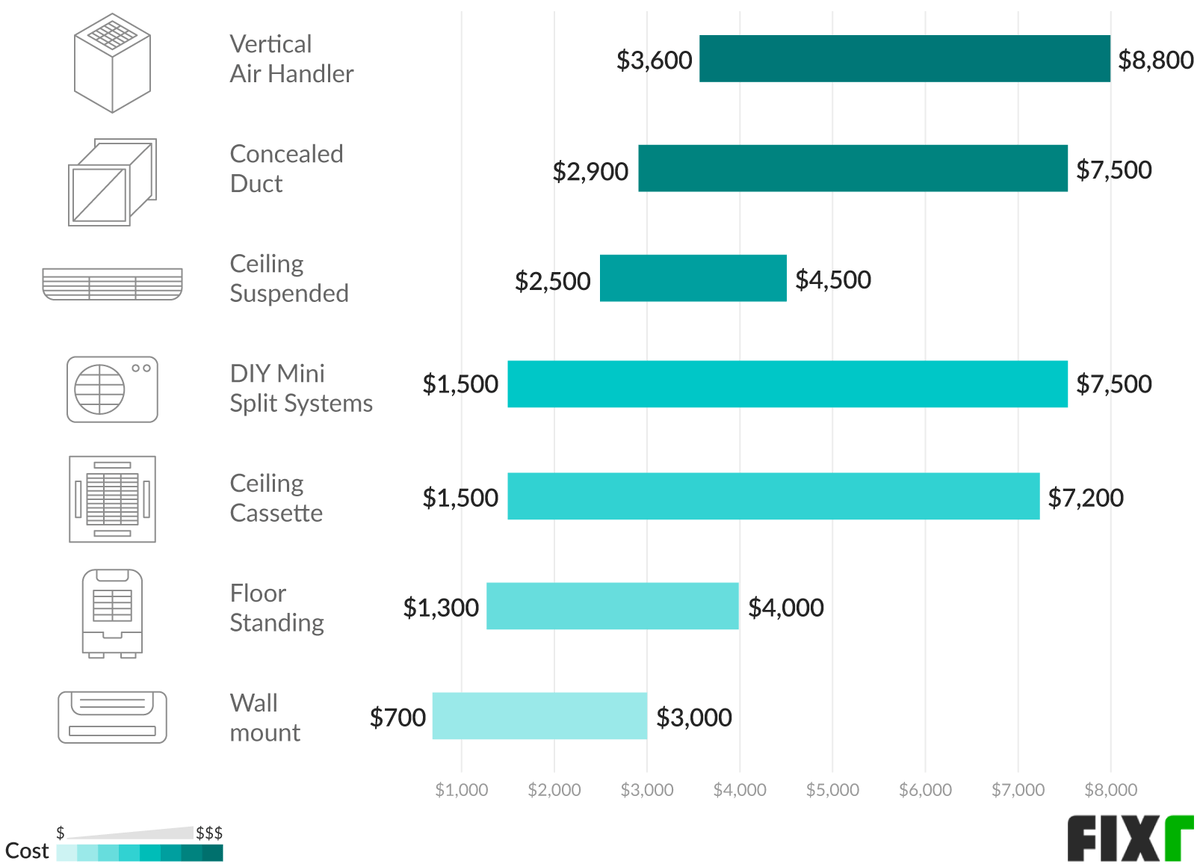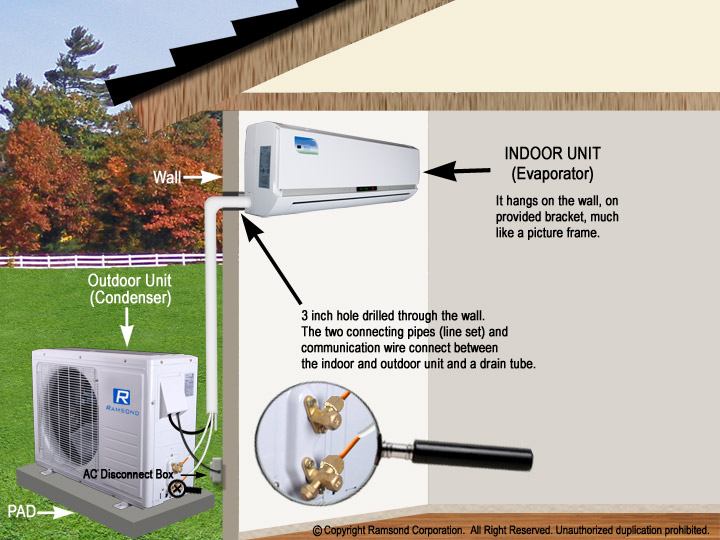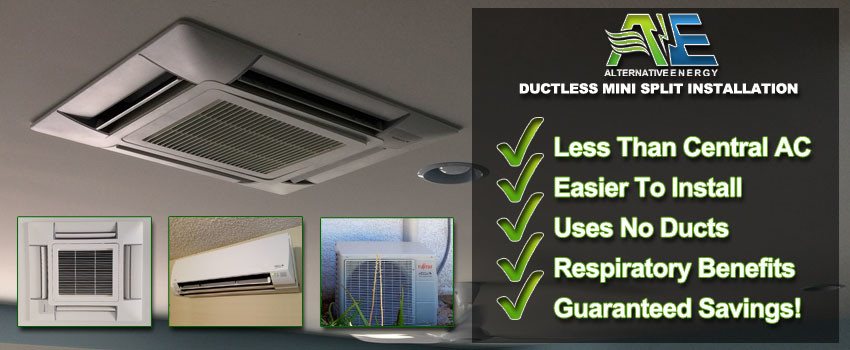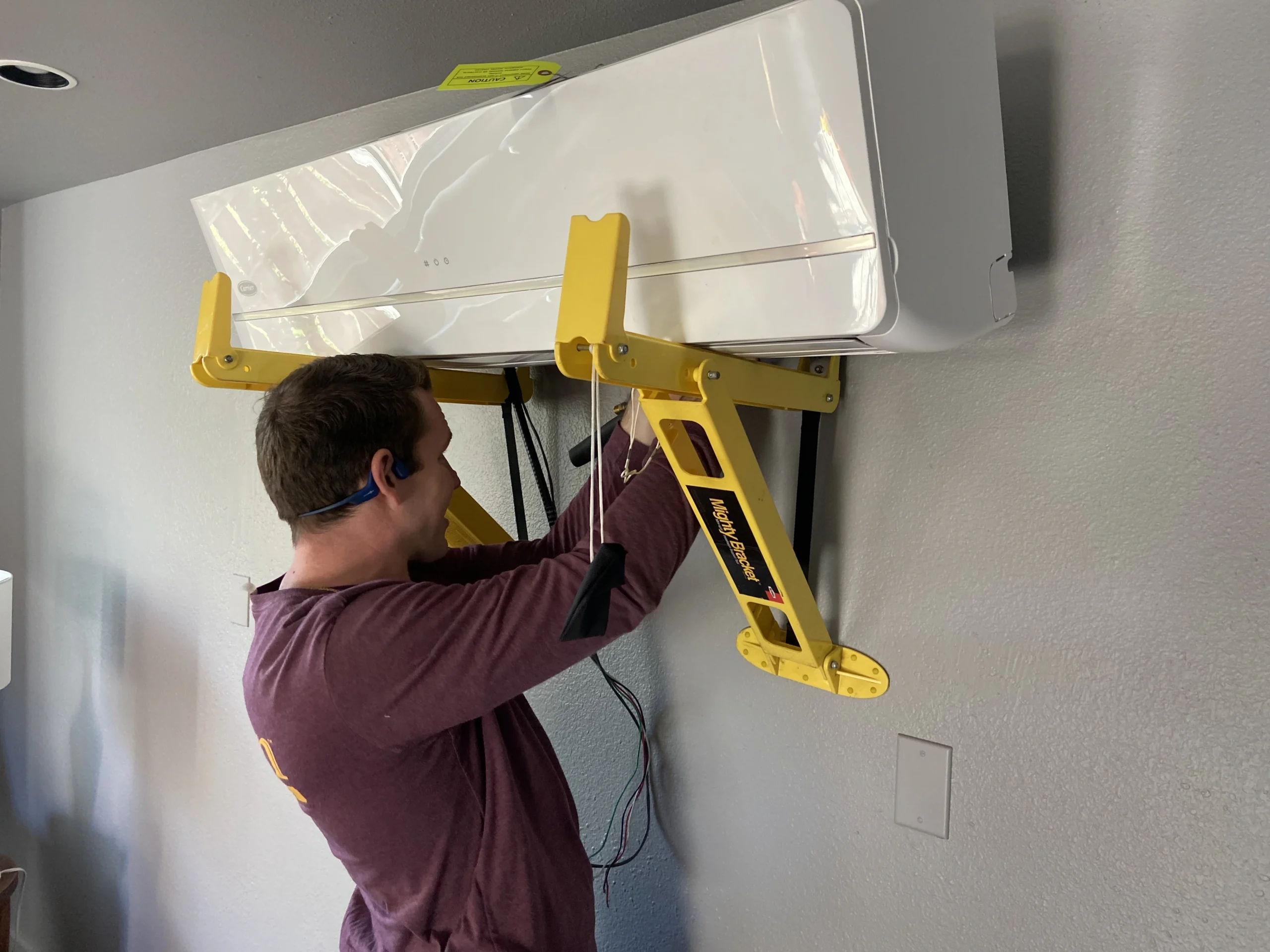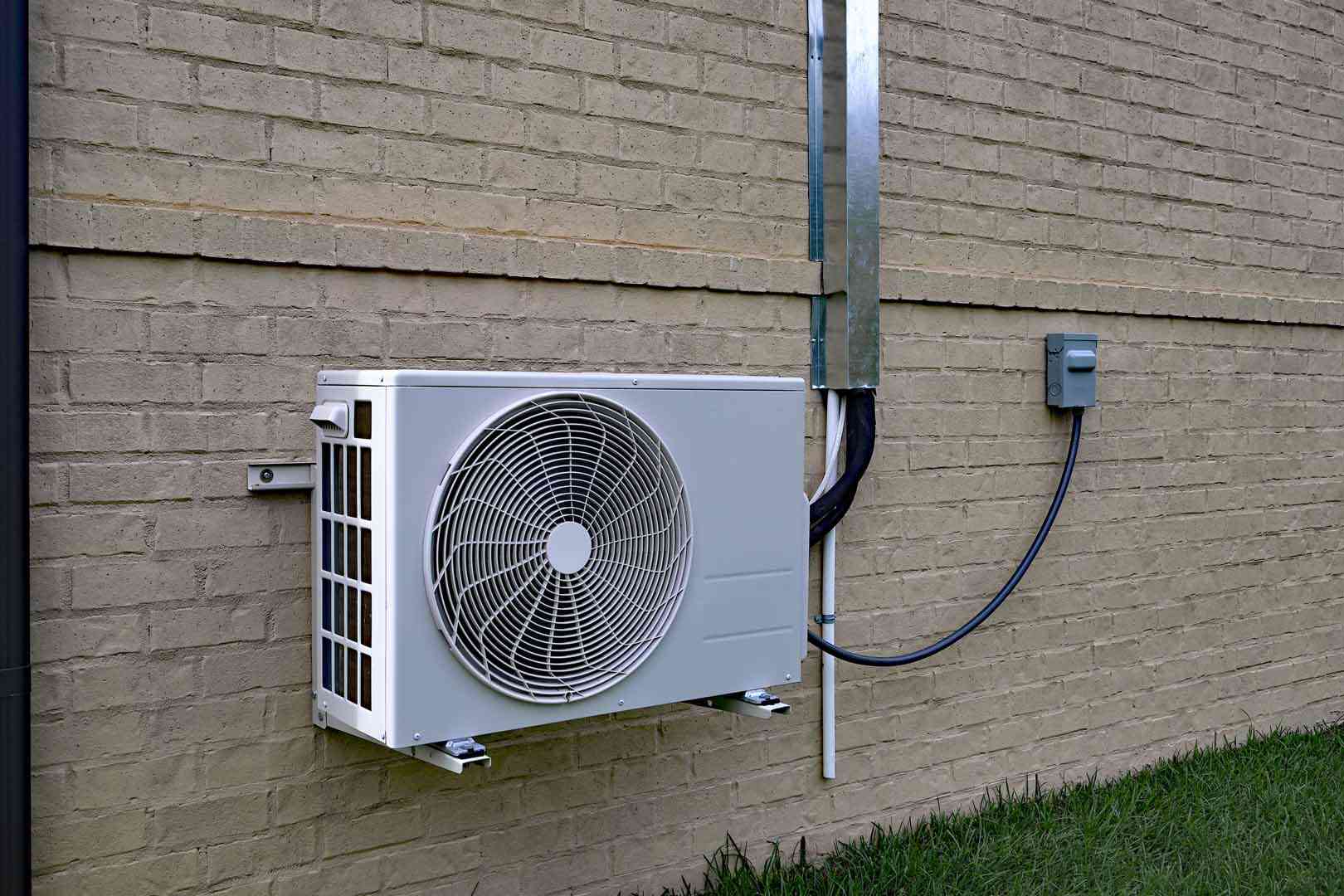Ductless Mini Split Ac Installation Cost

Ductless Mini-Split AC Installation Cost: A Comprehensive Guide for Homeowners
Ductless mini-split air conditioning systems are gaining popularity as a versatile and efficient solution for heating and cooling individual rooms or zones in a home. They offer a compelling alternative to traditional central HVAC systems, especially in situations where ductwork is impractical or non-existent, such as in older homes, additions, or converted spaces. Understanding the costs associated with ductless mini-split AC installation is crucial for making informed decisions.
What is a Ductless Mini-Split AC System?
Unlike central AC systems that rely on a network of ducts to distribute conditioned air, ductless mini-splits consist of two main components: an outdoor compressor/condenser unit and one or more indoor air handling units. These units are connected by refrigerant lines and electrical wiring, requiring only a small hole in the wall for installation. Each indoor unit can be independently controlled, allowing for zoned heating and cooling.
Factors Affecting Ductless Mini-Split Installation Costs
The total cost of installing a ductless mini-split system can vary significantly depending on several factors. Understanding these factors will help you estimate your potential expenses and make informed decisions about your system selection and installation process.
- Number of Indoor Units: The primary cost driver is the number of indoor units required. Each unit adds to the overall equipment and labor expenses. A single-zone system (one outdoor unit and one indoor unit) will naturally be less expensive than a multi-zone system.
- Size and Capacity (BTU): The size of the area you need to cool or heat determines the required capacity of the system, measured in British Thermal Units (BTU). Larger rooms require higher BTU ratings, leading to more expensive units. Proper sizing is critical for optimal performance and energy efficiency. Over-sized units can lead to short cycling and discomfort, while undersized units may struggle to maintain desired temperatures.
- Brand and Model: Different brands offer varying levels of performance, features, and price points. Popular brands like Mitsubishi, Daikin, Fujitsu, LG, and Toshiba generally offer high-quality systems, but their pricing can differ. Entry-level models will be more affordable than high-end models with advanced features.
- Installation Complexity: The ease of installation can significantly impact labor costs. Factors such as the accessibility of the outdoor unit location, the distance between the indoor and outdoor units, and the complexity of the electrical wiring can all influence the installation time and expense.
- Electrical Work: Ductless mini-splits require a dedicated electrical circuit. If your existing electrical panel needs upgrades or modifications to accommodate the new system, this will add to the overall cost.
- Permits and Inspections: Most jurisdictions require permits for HVAC installations. The cost of these permits can vary depending on your location. Inspections are also often required to ensure the installation meets local building codes.
- Labor Costs: Labor costs vary depending on the region, the contractor's experience, and the complexity of the installation. It's essential to get quotes from multiple qualified HVAC contractors to ensure you're getting a competitive price.
- Existing Wall Structure: If the walls are concrete or require special framing, this can increase the labor involved and the cost.
Ductless Mini-Split AC System Costs: A Breakdown
To provide a clearer picture of the costs involved, here's a breakdown of the typical expenses associated with ductless mini-split installation:
- Equipment Costs:
- Single-Zone System (one indoor unit): $1,500 - $4,500
- Multi-Zone System (two or more indoor units): $3,000 - $10,000+ (depending on the number of zones)
- Installation Costs:
- Single-Zone System: $800 - $2,000
- Multi-Zone System: $1,500 - $4,000+ (depending on the number of zones and complexity)
- Electrical Work: $200 - $1,000 (depending on the extent of electrical modifications needed)
- Permits and Inspections: $50 - $300
Total Estimated Cost: A single-zone ductless mini-split AC system can range from $2,300 to $6,500 installed. A multi-zone system can range from $4,500 to $14,000 or more.
Popular Ductless Mini-Split Brands and Models
Several reputable brands offer a wide range of ductless mini-split systems. Here are some popular options:
- Mitsubishi Electric: Known for their high efficiency, quiet operation, and advanced features like Hyper-Heating technology. Models like the MSZ-FH series and the M-Series are highly regarded.
- Daikin: Offers a wide range of systems, from entry-level to premium models, with a focus on energy efficiency and air quality. The Daikin Aurora series is known for its cold-climate performance.
- Fujitsu: Provides reliable and efficient systems with a strong emphasis on comfort and user-friendliness. The Fujitsu Halcyon series is a popular choice.
- LG: Offers stylish and feature-rich systems with smart home integration capabilities. The LG Art Cool series combines aesthetics with performance.
- Toshiba: Known for their durability and energy efficiency, Toshiba offers a range of ductless mini-split systems suitable for various applications.
When comparing models, pay attention to the following ratings:
- SEER (Seasonal Energy Efficiency Ratio): Measures the cooling efficiency of the system. Higher SEER ratings indicate greater energy savings. Look for models with SEER ratings of 16 or higher.
- HSPF (Heating Seasonal Performance Factor): Measures the heating efficiency of the system (for heat pump models). Higher HSPF ratings indicate greater energy savings. Look for models with HSPF ratings of 8 or higher.
- AFUE (Annual Fuel Utilization Efficiency): While primarily used for furnaces, understand how this rating compares if considering a hybrid system.
Pros and Cons of Ductless Mini-Split Systems
Before investing in a ductless mini-split system, it's important to weigh the pros and cons:
Pros:
- Zoned Heating and Cooling: Allows you to control the temperature in individual rooms or zones, improving comfort and energy efficiency.
- Energy Efficiency: Ductless mini-splits are generally more energy-efficient than traditional central AC systems, leading to lower energy bills.
- Easy Installation: Installation is typically less disruptive and less expensive than installing ductwork for a central AC system.
- Space Saving: Indoor units are compact and can be mounted on walls or ceilings, saving valuable floor space.
- Improved Air Quality: Many models come with advanced air filtration systems that can remove allergens and pollutants from the air.
Cons:
- Initial Cost: The initial cost of purchasing and installing a ductless mini-split system can be higher than window AC units or some traditional central AC systems.
- Aesthetics: Some homeowners find the appearance of the indoor units less appealing than traditional vents.
- Maintenance: Regular maintenance, including cleaning filters and coils, is essential for optimal performance.
Warranty and Maintenance
Most ductless mini-split systems come with a manufacturer's warranty that covers parts and labor for a specific period. The warranty typically ranges from 5 to 12 years for the compressor and 1 to 5 years for other components. It's important to understand the terms and conditions of the warranty before purchasing a system. Registering the system promptly is crucial to ensure warranty validity.
Regular maintenance is essential for keeping your ductless mini-split system running efficiently and extending its lifespan. Maintenance tasks include:
- Cleaning or replacing air filters: Every 1-3 months, depending on usage.
- Cleaning the indoor unit coils: At least once a year.
- Cleaning the outdoor unit coils: At least once a year.
- Inspecting refrigerant lines: Annually, by a qualified technician.
- Checking electrical connections: Annually, by a qualified technician.
Finding a Qualified Installer
Choosing a qualified and experienced HVAC contractor is crucial for a successful ductless mini-split installation. Here are some tips for finding a reputable installer:
- Get multiple quotes: Contact at least three different contractors to compare pricing and services.
- Check their credentials: Ensure the contractor is licensed and insured.
- Read online reviews: See what other customers have to say about their experience with the contractor.
- Ask for references: Contact previous customers to get feedback on the contractor's work.
- Verify certifications: Look for NATE (North American Technician Excellence) certification, which indicates a high level of expertise.
Conclusion
Ductless mini-split AC systems offer a flexible and efficient solution for heating and cooling your home. While the initial cost can be a factor, the long-term energy savings and improved comfort can make them a worthwhile investment. By understanding the factors that affect installation costs, comparing different brands and models, and choosing a qualified installer, you can ensure a successful and cost-effective installation.


